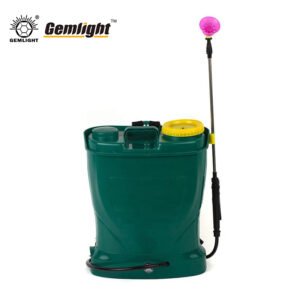1. Why African Farmers Prefer the Sickle Machete in Manual Harvesting
In many parts of Africa, especially in rural and semi-mechanized farming regions, the sickle machete has long been a preferred hand tool for fieldwork. Unlike larger bush tools or modern machinery, the sickle machete offers a balanced combination of simplicity, precision, and affordability—making it ideal for smallholder farmers and agricultural workers.
The sickle machete’s unique curved blade is designed for pulling cuts, which is particularly useful in harvesting crops such as maize, millet, and sugarcane. Its efficiency in removing low-lying weeds and undergrowth is highly appreciated in regions where manual clearing remains the norm due to terrain or budget limitations.
In Sub-Saharan Africa, where farming is labor-intensive and often carried out under harsh sun and varied field conditions, the lightweight yet sturdy design of the sickle machete ensures long working hours with reduced hand fatigue. Moreover, the sickle shape allows users to work with precision around delicate crops or root structures, reducing damage and increasing productivity.
Many African farmers also value the sickle machete for its cultural familiarity. It has become a staple in markets across West and East Africa, used not just for harvesting but for multipurpose daily tasks—cutting banana leaves, clearing garden plots, or trimming fodder for livestock.
As agriculture continues to be a vital economic activity in Africa, the need for reliable, durable tools like the latin machete will remain high. When sourced from manufacturers offering consistent blade quality and ergonomic designs, the sickle machete proves to be a high-return investment for both individuals and organizations involved in rural development.

2. Benefits of the Long Handled Sickle Machete for African Field Work
The long handled sickle machete is a practical innovation born out of the need for greater efficiency, safety, and comfort during extended fieldwork. In large tracts of farmland, typical across African nations like Nigeria, Ethiopia, and Tanzania, this tool is increasingly becoming a must-have for agricultural professionals and daily workers alike.
One of the key benefits of the long handled sickle machete is its ability to reduce strain on the user. By extending the reach of the blade through a longer handle, workers can maintain an upright posture, decreasing the risk of back and shoulder injuries that are common with prolonged bending and crouching. This ergonomic advantage is especially valued by older farmers or those engaged in day-long clearing and weeding.
Another critical advantage lies in its effectiveness in clearing larger swaths of land quickly. With the longer handle acting as a leverage point, each swing of the machete generates more cutting force with less effort. This makes it ideal not only for crop harvesting but also for managing overgrown vegetation, clearing irrigation ditches, and maintaining road or fence boundaries.
The long handled sickle machete is also well suited for areas with thorny or dense growth, offering the user a safer distance from branches, insects, and other hazards. For farmers working in hot climates and rugged terrain, this added layer of comfort and safety is an important consideration.
Moreover, the design can be adapted with different materials—wooden handles for traditional grip, or steel tubes for industrial durability. African users often prefer the tactile familiarity of wood or rubber-wrapped grips that stay firm even in humid conditions. As a versatile and effective farming companion, the long handled machete supports higher productivity while aligning with regional farming habits and needs.

3. Factory-Direct Long Handled Sickle Machete – Our Featured Products
As a manufacturer specializing in agricultural hand tools for over 30 years, our factory provides a wide range of sickle machete and long handled sickle machete solutions tailored specifically to African markets. We understand the operational realities and preferences of end users, and we integrate these insights into our designs and production processes.
Our product lineup includes:
- Standard Sickle Machetes with carbon steel blades, heat-treated edges, and ergonomic wooden or plastic handles. Ideal for small-scale harvesting and weed clearing.
- Long Handled Machetes in multiple handle lengths (up to 90cm), equipped with solid wooden shafts or tubular steel handles. These are built for users seeking improved reach and back-saving operation.
- Customizable Blades: We offer straight, curved, hook-style, and even serrated blade options to suit different agricultural conditions—whether it’s cutting sugarcane, maize, shrubs, or elephant grass.
- Private Label & Branding Services: We support OEM and ODM services for importers, wholesalers, and NGOs. Custom logo printing, color matching, and packaging options are available.
- Durable Finishing: All blades undergo anti-rust treatment and sharpness testing. Handles are sealed, polished, and reinforced to withstand intense daily use in African climates.
Our sickle machetes have been exported in bulk to countries including Ghana, Uganda, Kenya, Zambia, and Côte d’Ivoire, with positive feedback on durability and functionality. We’re proud to offer scalable production and competitive pricing for volume buyers and government procurement programs. Whether for distribution to farming co-ops or resale in agricultural supply chains, our sickle machetes deliver performance African users can depend on.

4. Machete vs Sickle: Which Tool Fits Your African Agricultural Needs?
For buyers and farmers deciding between a machete and a sickle, understanding their differences—and the hybrid utility of a billhook machete—is essential to making an informed choice. Each tool has specific strengths based on the type of work and environment, and choosing the right one can significantly impact productivity in African field settings.
Traditional machetes are designed for chopping, clearing brush, and heavy-duty cutting tasks. They are straight-bladed and excel in tasks like trail blazing, clearing bushes, or cutting firewood. Machetes are indispensable in rural areas where wild vegetation quickly encroaches on farmland or access paths.
Sickles, on the other hand, are curved blades tailored for precision harvesting. They work well in rice paddies, millet farms, or vegetable plots where delicate control is needed to avoid damaging the roots or adjacent crops. However, their short handles often require bending or crouching, which may limit comfort during prolonged use.
This is where the sickle machete—especially the long handled sickle machete—bridges the gap. It combines the curved precision of a sickle with the extended reach and strength of a machete. For African agricultural work, it offers the best of both worlds: the finesse needed for harvesting and the force necessary for clearing.
From large plantation owners to smallholder farmers, this hybrid tool is proving especially popular in regions with mixed crop layouts and varied terrain. For NGOs and procurement officers, offering sickle machetes in equipment programs ensures workers receive versatile tools that adapt to multiple tasks.
In summary, while machetes and sickles each serve vital roles, the sickle machete—particularly the long handled version—delivers unmatched versatility and efficiency, making it the smart investment for Africa’s diverse agricultural needs.
About us:
Dingzhou Gemlight Cutting Tools Co., Ltd.,With a solid foundation since 1990, Gemlight machete is a trusted name in the field of cane machete manufacturing. We focus on R&D, design and production to produce high quality wholesale china machete and shovel,hoe,pickaxe,sickle,farm tools.




